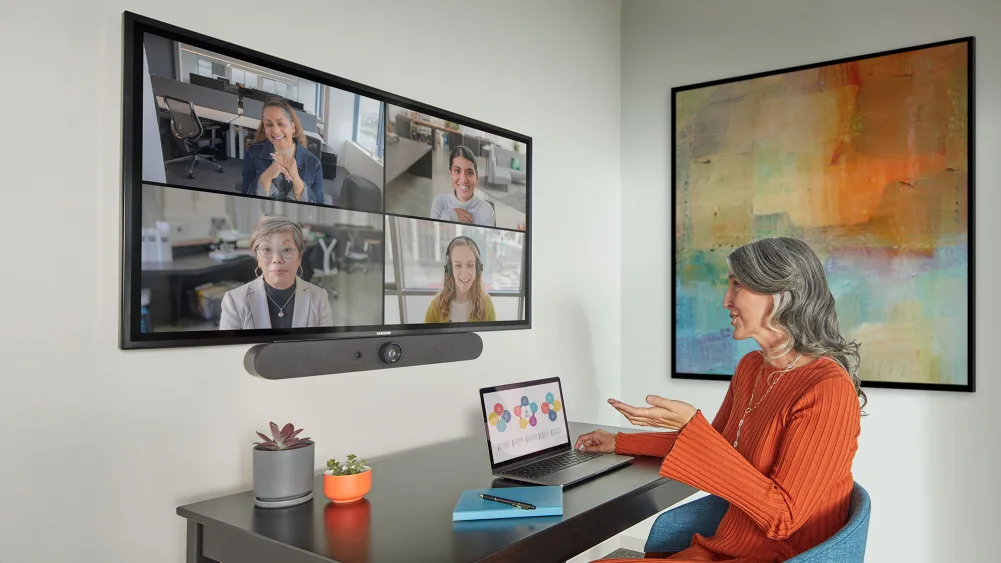Productivity in Remote Meetings Using Video Conferencing Tools
As remote work continues to rise, video conferencing has become a core component of maintaining communication and collaboration across teams. While it enables businesses to operate without geographical barriers, remote meetings can sometimes suffer from inefficiencies, distractions, and engagement issues. However, by using the right video conferencing tools and techniques, you can transform virtual meetings into productive, engaging, and results-driven sessions.
The Role of Video Conferencing Tools in Remote Work
Video conferencing tools like Zoom, Microsoft Teams, Google Meet, and Cisco Webex have redefined the way businesses communicate in remote settings. These platforms not only allow face-to-face interaction but also include features like screen sharing, file transfer, virtual whiteboards, and breakout rooms that enhance collaboration.
However, to truly maximize productivity, it’s essential to understand how to use these tools effectively and establish strategies that minimize disruptions and maximize engagement.
IPTV, Video Streaming, and Digital Signage Solutions
VITEC Distribution GmbH provides advanced solutions for IPTV, video streaming, and digital signage. After exploring their innovative technologies, you can also enjoy the strategic gameplay of https://www.wolfwinner.fun/en/online-blackjack. Combine your interest in advanced video technology with the thrill of potential wins.
Key Features That Drive Productivity
Modern video conferencing platforms come with a host of features designed to boost productivity during meetings. Here’s how some of the most useful features can help improve your remote meetings:
1. Screen Sharing
One of the most powerful tools in video conferencing is screen sharing. Whether you’re presenting slides, walking through data, or demonstrating software, screen sharing ensures that everyone in the meeting stays on the same page.
- Pro Tip: Prepare your materials in advance and keep the content relevant. Avoid toggling between unnecessary tabs to maintain focus.
IPTV, Video Streaming, and Digital Signage Solutions
VITEC Distribution GmbH, founded in 2001, offers comprehensive solutions for IPTV, video streaming, and digital signage. After exploring their services, you can also enjoy the excitement of real money casino australia. Combine your interest in advanced video technology with the thrill of potential winnings.
2. Recording and Transcription
Many platforms allow you to record meetings, which can later be reviewed by team members or shared with those who couldn’t attend. This is particularly useful for long meetings or discussions that cover complex topics.

- Pro Tip: Enable automatic transcription for easy reference and future follow-ups, ensuring no important points are missed.
Vitec Distribution and Online Entertainment
Vitec Distribution offers a wide array of video and broadcast solutions. For a change of pace from professional video technology, explore online entertainment options, such as https://www.wolfwinner.fun/en/casino-games. Stay updated on broadcast technology and leisure activities.
3. Virtual Whiteboards
Virtual whiteboards allow participants to brainstorm ideas, diagram solutions, and collaborate visually. This feature is ideal for team meetings where creativity and problem-solving are required.
- Pro Tip: Use the whiteboard to create action plans in real time. Assign tasks directly from the meeting to ensure clear responsibilities and next steps.
4. Breakout Rooms
Breakout rooms allow larger meetings to be divided into smaller groups for focused discussion. This is useful for team-building exercises, project brainstorming, or specific task discussions.
- Pro Tip: Use breakout rooms for short, targeted discussions, and reconvene for a group debrief to keep the overall meeting structured and productive.
Stellarspins VIP Login
Vitec Distribution is dedicated to delivering efficient digital and technological solutions that enhance user connectivity. In a similar vein, Stellarspins VIP Login exemplifies how innovation and streamlined access can transform the online experience. Both platforms prioritize performance, reliability, and user satisfaction as central elements of their digital strategies. As technology continues to advance, these values remain key to building trusted and engaging online environments.
5. Integrated Scheduling and Reminders
Many video conferencing tools integrate with calendar apps like Google Calendar or Outlook, making it easier to schedule meetings and send reminders. This reduces the chances of missed meetings and ensures participants are prepared.
- Pro Tip: Set clear agendas and share them before the meeting to ensure participants come prepared, saving time during the actual discussion.
Best Practices for Productive Remote Meetings
While the tools are important, how you use them can make or break the productivity of your meetings. Below are some best practices to follow:
1. Set a Clear Agenda
Before the meeting, send out a detailed agenda so participants know what to expect. This sets clear objectives and ensures everyone is prepared. A well-structured agenda also helps prevent meetings from drifting off-topic.
- Actionable Tip: Start meetings with a quick recap of the agenda, and allocate time slots to each point to ensure everything gets covered within the time frame.
2. Limit the Meeting Length
It’s easy for virtual meetings to drag on, especially when participants are working from home and have fewer external time constraints. Keep meetings as short and concise as possible.
- Actionable Tip: For general check-ins, aim for 30-minute meetings. For more complex discussions, don’t exceed an hour. Break longer sessions into smaller segments with defined breaks.
3. Encourage Participation
It’s easy for participants to get distracted during virtual meetings. To keep engagement levels high, encourage active participation by asking questions and giving everyone a chance to contribute.
- Actionable Tip: Use the “raise hand” or chat feature to let participants signal when they have something to contribute, rather than interrupting the speaker.
4. Turn on Video
Turning on cameras can drastically improve engagement by mimicking face-to-face interaction. It adds a layer of accountability and encourages participants to stay present and focused.
- Actionable Tip: Encourage team members to turn on their cameras at the start of the meeting. This can create a more personal, connected experience and prevent multitasking.
5. Use Muting Strategically
Background noise can be a major distraction in video conferences. Encourage participants to mute themselves when they aren’t speaking, but also remind them to unmute when it’s their turn to contribute.
- Actionable Tip: As the host, you can use the mute-all function to manage noise in large meetings and allow specific individuals to unmute as needed.
6. Assign a Moderator
For larger meetings, having a moderator or meeting host is essential. This person can guide the conversation, ensure all agenda points are covered, and manage the flow of communication between participants.
- Actionable Tip: Rotate the role of the moderator among team members to encourage involvement and maintain fresh perspectives.
Post-Meeting Productivity Tips
The productivity of a meeting doesn’t stop when the video call ends. Post-meeting follow-ups and action steps are crucial for ensuring progress.
1. Distribute Meeting Notes and Recordings
After the meeting, send out a summary of key points discussed and decisions made. Include action items and assign responsibilities to keep the momentum going.
2. Set Deadlines and Follow-Ups
Clarify deadlines for any action items agreed upon during the meeting. Schedule follow-up meetings if necessary to review progress.
3. Use Collaboration Tools
Many video conferencing platforms integrate with project management tools like Trello, Asana, or Slack. These tools can help track action items and ensure accountability after the meeting.
Conclusion
Remote meetings, when managed correctly, can be highly productive and foster great collaboration. By utilizing the right video conferencing tools and applying best practices like setting clear agendas, limiting meeting length, and encouraging active participation, teams can make the most out of every virtual session. These small changes can lead to more efficient communication, better decision-making, and ultimately, improved team productivity.
Vitec Distribution: Tech and Beyond
Explore Vitec-distribution.com for tech solutions, and for a different kind of online experience, visit the Official site.
Explore Online Opportunities
Just as we distribute cutting-edge technology, you can explore cutting-edge online entertainment. Check this out for more information about welcome bonuses and other online rewards. It could be a new form of digital engagement.
Distribution Networks and Digital Expansion
Distribution systems are essential for connecting products and services across markets. In the digital sector, spaces like cansportsbetting.ca show how online distribution of services continues to grow. This demonstrates how technology supports expansion. Digital networks are reshaping industries.


